Sloshing Water in a Cube with Transitional motion, ANSYS Fluent Training
$100.00 $50.00 Student Discount
- The problem numerically simulates the Sloshing Water in a Cube using ANSYS Fluent software.
- We design the 3-D model with the Design Modeler software.
- We mesh the model with ANSYS Meshing software, and the element number equals 168367.
- We perform this simulation as unsteady (Transient).
- We use the VOF Multiphase model to define water and air.
Click on Add To Cart and obtain the Geometry file, Mesh file, and a Comprehensive ANSYS Fluent Training Video.
To Order Your Project or benefit from a CFD consultation, contact our experts via email (info@mr-cfd.com), online support tab, or WhatsApp at +44 7443 197273.
There are some Free Products to check our service quality.
If you want the training video in another language instead of English, ask it via info@mr-cfd.com after you buy the product.
Description
Description
In this project, the transitional motion of a cube containing water and air is investigated by ANSYS Fluent software.
The fluid domain’s geometry is designed in Design Modeler, and the computational grid is generated using ANSYS Meshing. The mesh type is unstructured, and the element number is 168367.
Transitional Motion Methodology
The interaction of water and air inside the cube is modeled using the Volume of Fluid (VOF) multiphase approach. VOF multiphase approach is considered since it is an efficient and precise approach for capturing the interface location between phases.
It is one of the most common multiphase flow investigation approaches due to computational cost convenience. The cube accelerates in the X direction with an acceleration equal to 5 m/s2, while gravitational acceleration in the -Y direction affects the multiphase entity.
Time solver is assumed unsteady.
Transitional Motion Conclusion
This project investigates the simplified sloshing effect in fluid containers where a situation similar to the one studied here can occur due to the acceleration of the carrier vehicle.
Results show that pressure on the bottom surface of the cube varies with position; further away from the cube’s front, pressure increases. We investigate the sloshing effect in a simple cube containing water and air, which is accelerating in the X direction considering gravity.
Pressure on the bottom of the cube increases as we move towards the back, and starting from 1290 Pa, gauge pressure reaches the high value of 6500 Pa at the back face of the cube.
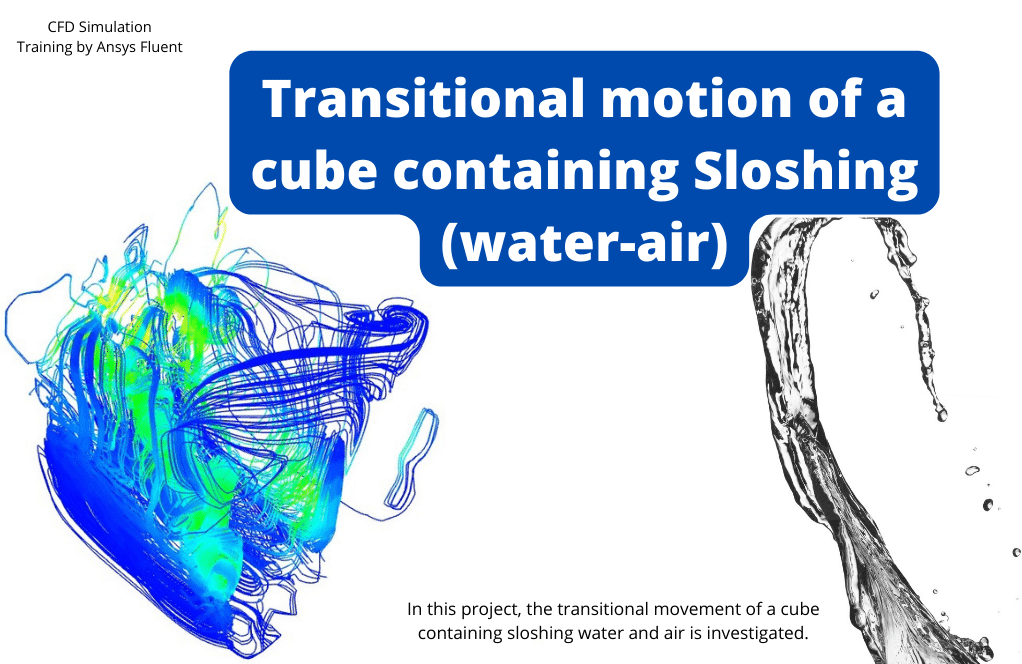
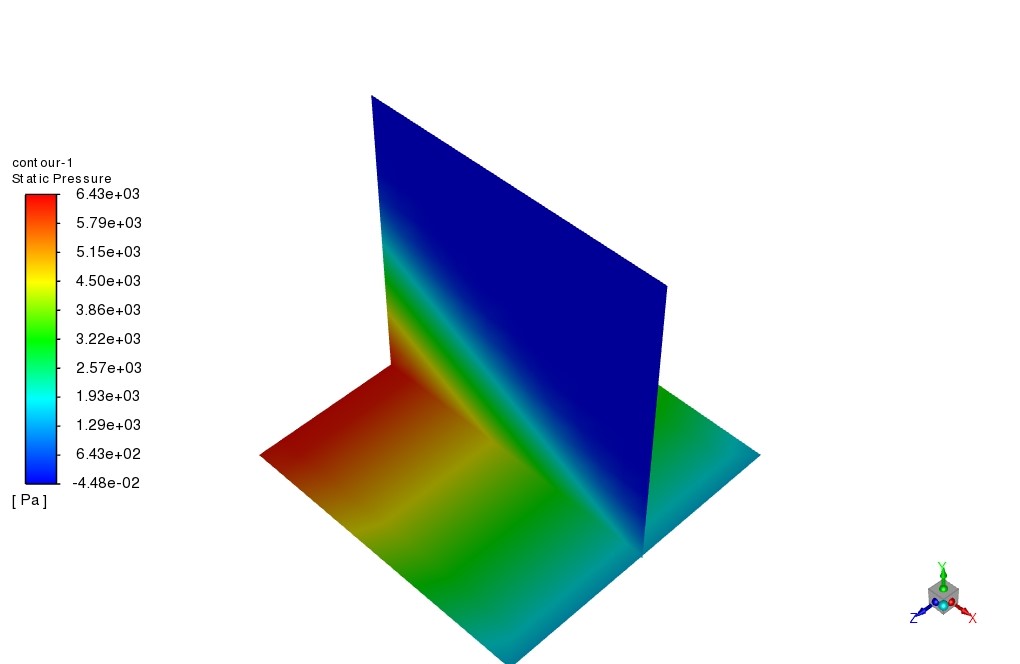
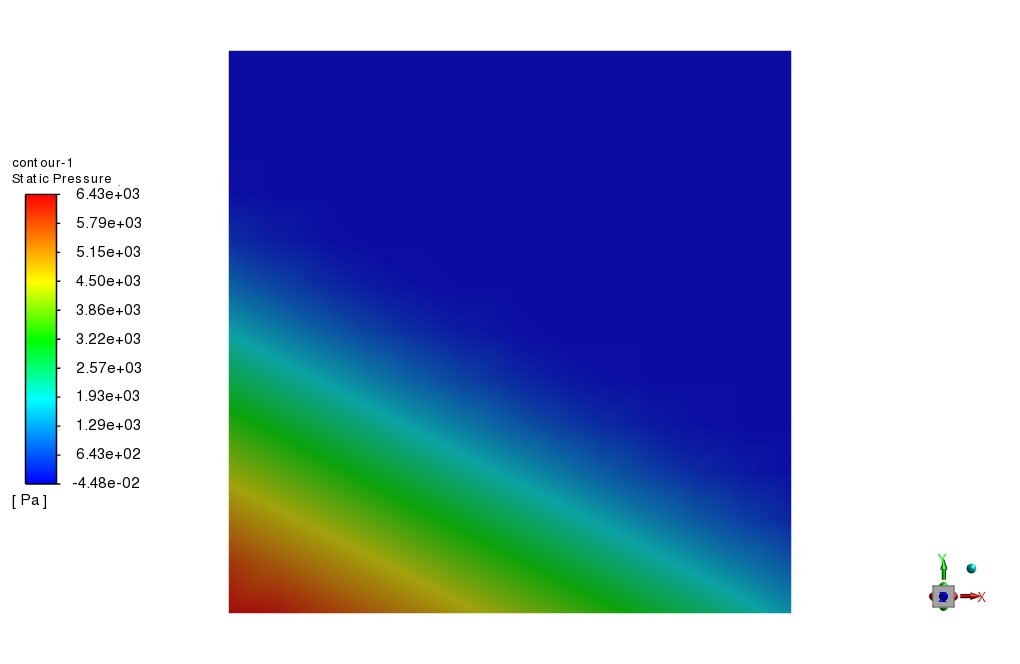
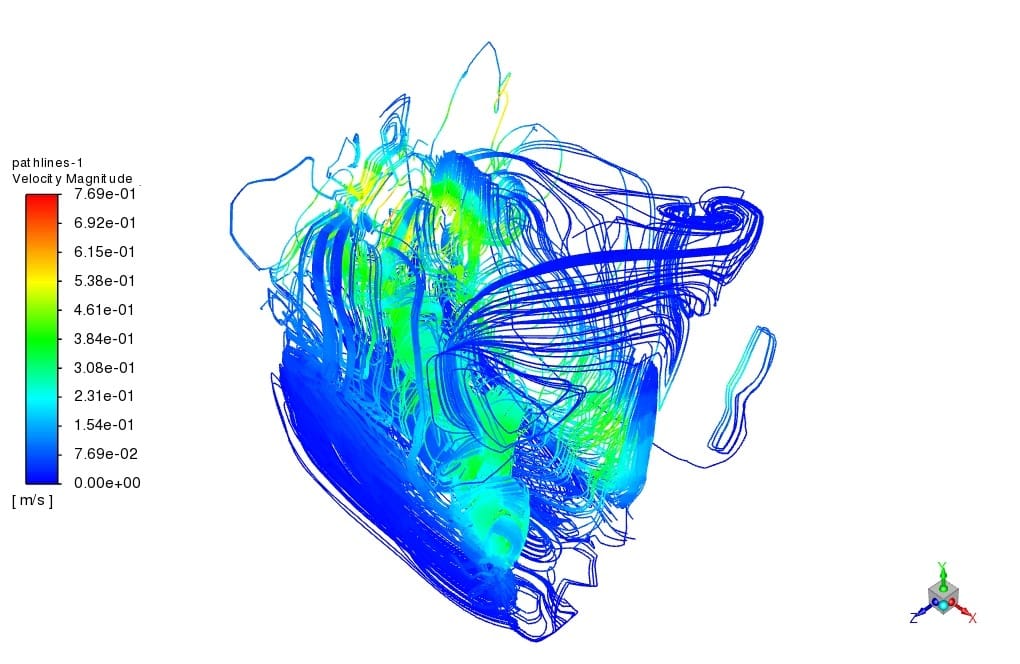
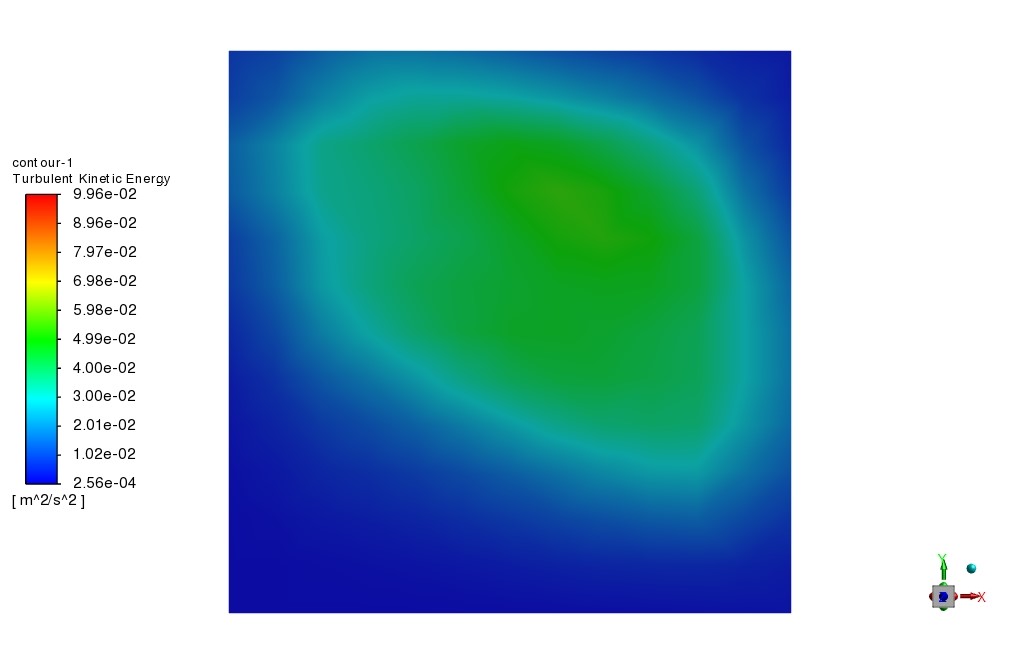
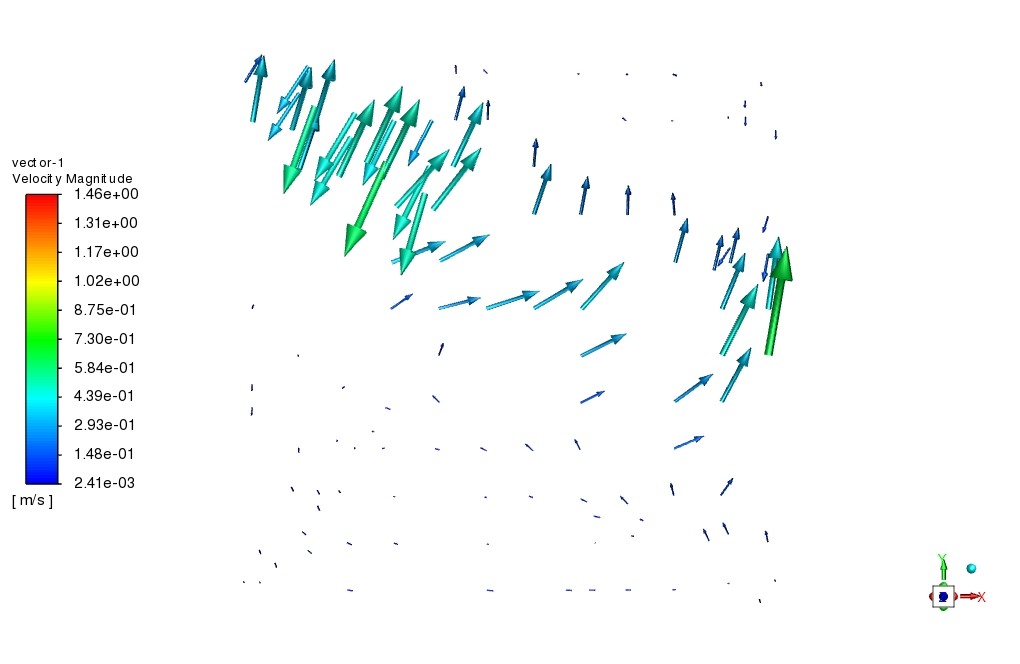
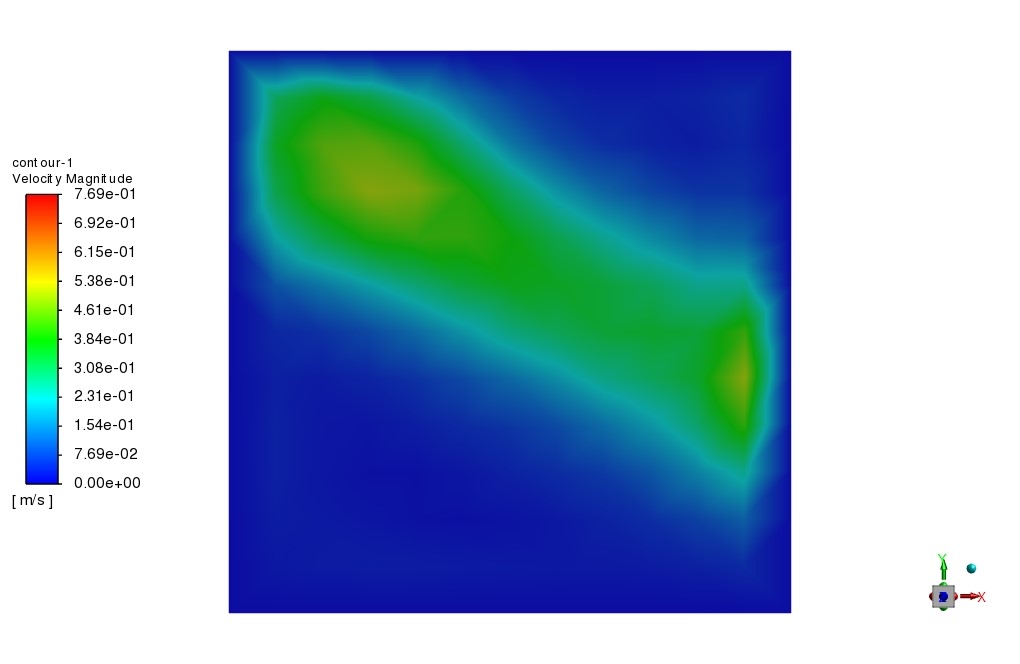
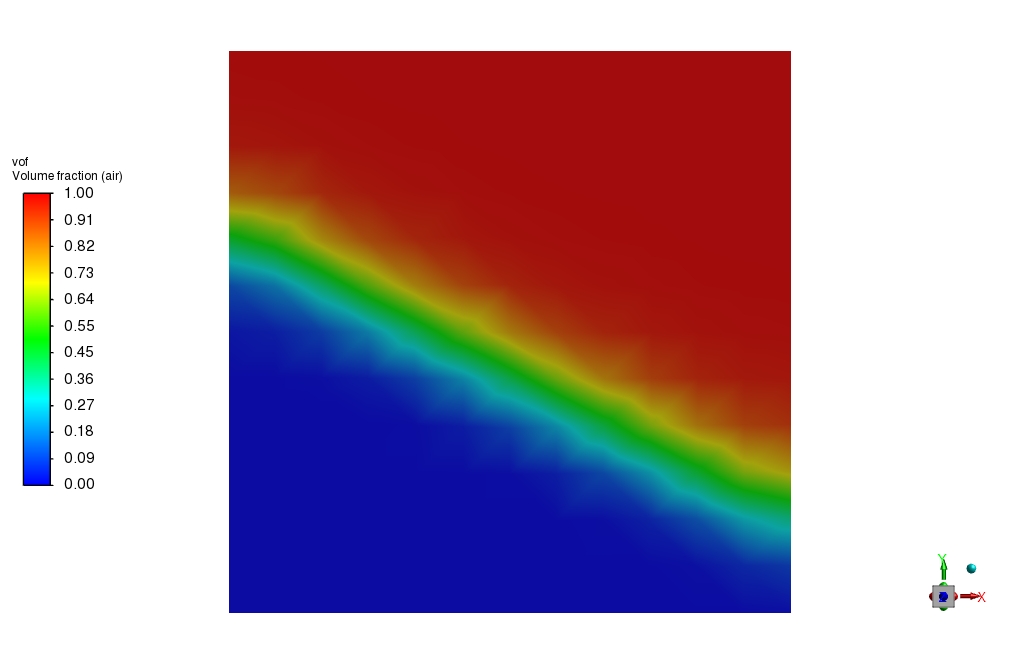
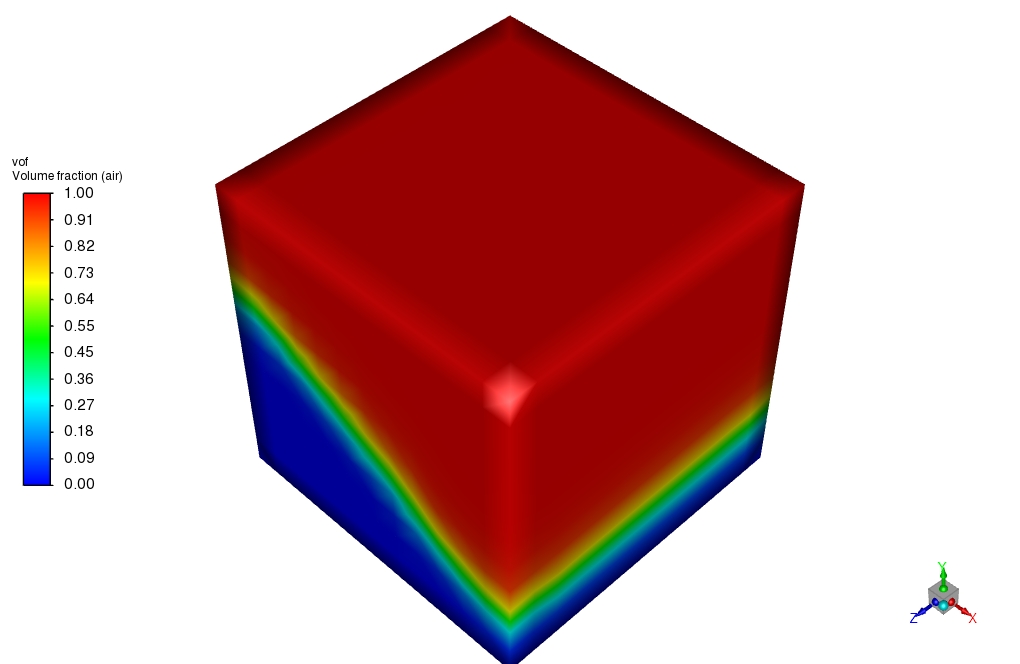


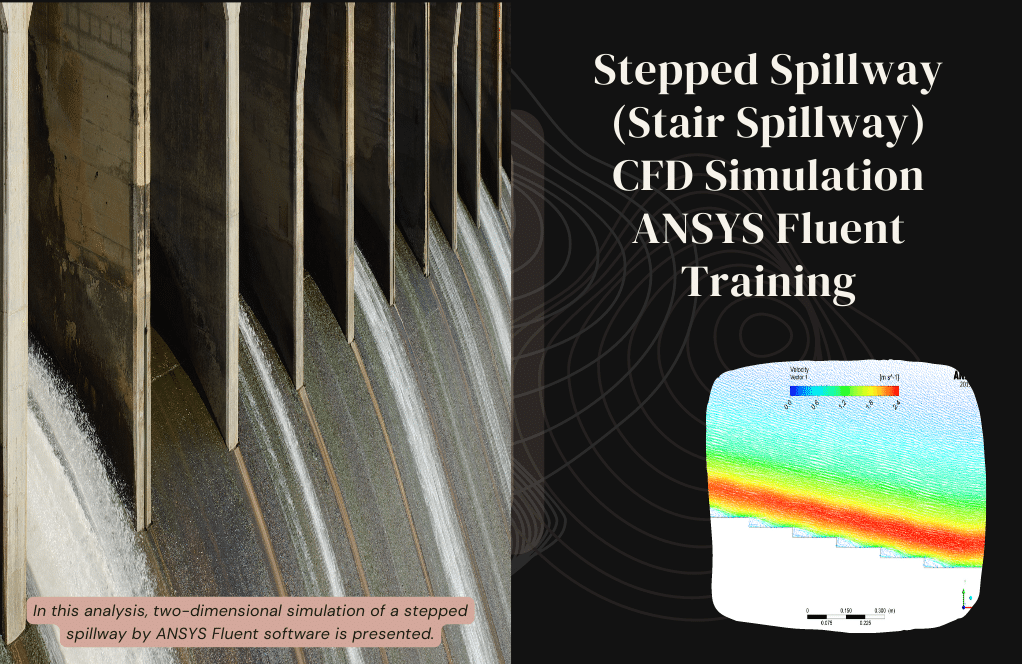

Dawson Ondricka –
Can the simulation model the effect of different cube motions?
MR CFD Support –
Absolutely! The cube’s motion is a parameter that can be adjusted in the simulation. This allows for a wide range of simulation scenarios, such as different amplitudes and frequencies of the cube’s motion.
Allen Blick –
Can the simulation predict the pressure distribution in the cube?
MR CFD Support –
Yes, the simulation can predict the pressure distribution in the cube. This is important for understanding the fluid dynamics and the forces on the cube’s wall.
Pasquale Ziemann –
The VOF method was used for capturing the water-air interface – did this lead to accurate representation of the sloshing effect?
MR CFD Support –
Thank you for your insightful comment! Yes, using the Volume of Fluid (VOF) method enabled us to capture the dynamic interface between the water and air with high accuracy, which is critical for correctly simulating the sloshing effect within the cube. The computational results closely follow the physical behavior of such two-phase flow scenarios. We’re happy to hear you’re engaged with the intricacies of this approach!
Lily Jacobson II –
I’m really fascinated by the transitional motion study. Can the results of this model be scaled to different container shapes or different fluids, or is the study specific to the cube geometry and water-air interaction?
MR CFD Support –
The methodology applied in this study, using the VOF multiphase approach and considering physics such as container acceleration and gravitational forces, is generally scalable to different container shapes and fluids. While the specific results may differ due to changes in geometry and fluid properties, the underlying principles remain the same, and the concept can be adapted to simulate a wide range of sloshing scenarios with different container shapes and fluid types. However, one should note that for each different scenario, an appropriate computational model should be developed considering the unique properties of fluids and geometries involved.
Margarita Johnston –
Simply wonderful! The project provided comprehensive results on the pressure distribution caused by sloshing, and the attention to detail in simulating the transitional motion of water and air was exemplary. It was a great utility to visualize dynamic fluid behavior in response to vehicle acceleration.
MR CFD Support –
Thank you for taking the time to share your thoughts! We are thrilled to hear that our Sloshing Water in a Cube training project met your educational needs and helped you garner a deeper understanding of fluid dynamic behavior. If you have any more questions or need further assistance, don’t hesitate to contact us. We’re always here to help you on your CFD learning journey!
Mortimer Marvin –
Can the simulation predict the force on the cube’s wall due to the sloshing water
MR CFD Support –
Yes, the simulation can predict the force on the cube’s wall due to the sloshing water. This can be important for understanding the impact of the sloshing water on the cube’s stability and integrity.
Lilliana Bartell –
This training helped me understand fluid behaviors during transitional motion in a very practical way. The visualization of sloshing water and pressure distribution was highly detailed. What kind of applications can these types of simulations help with in the real world?
MR CFD Support –
Such types of fluid dynamics simulations are incredibly useful for analyzing the effects of sloshing in fuel tanks of vehicles like rockets and airplanes, liquid cargo in shipping containers, and the impact on stability in automotive fuel tanks during abrupt motions. These practical applications require precise modeling to ensure safety and efficiency, which sloshing simulations can provide.
Prof. Marshall Collier –
This learning product was well-constructed and gave me deep insights into fluid behavior during transitional motion. I especially appreciated the use of the VOF model to distinguish between the water and air phases, as well as the clear representation of pressure distribution due to sloshing. The graphical results really helped me visualize the impact of vehicle acceleration on fluid containment. Excellent work on illustrating complex fluid dynamics in a simple yet invaluable manner!
MR CFD Support –
Thank you so much for your kind words! We’re thrilled to hear that our simulation was able to provide you with clear and valuable insights into transitional motion and fluid dynamics. It’s great that the VOF model and pressure distribution representations have aided in your understanding of the sloshing effect. We appreciate you taking the time to share your positive experience with us!
Dr. Marcelo Hermann –
I finally understand the complexities of fluid motion with your project on water sloshing within a cube in transitional motion. Watching the interplay of water and air during acceleration was both educational and fascinating!
MR CFD Support –
Thank you so much for your positive feedback! We’re glad that our training project has helped enhance your understanding of fluid dynamics and sloshing effects. It’s very rewarding for us to know that the combination of visualizations and in-depth analysis could illustrate these complex phenomena clearly. If you’re interested in exploring other CFD topics, we’ll be happy to guide you further.
Kylie Fritsch –
I was greatly impressed with the level of detail in the simulation of sloshing water dynamics! The training made the complex physics behind transitional water motion quite easy to grasp.
MR CFD Support –
Thank you for your kind words! We’re glad to hear that our training on sloshing water in a cube made the concept straightforward for you to understand. It’s always our aim to demystify complex physics with clear and detailed simulations. Your feedback is greatly appreciated!
Sim Schmidt –
I’m very impressed with the detail and clarity in the execution of this CFD project on sloshing water in a cube. The integration of VOF method for phase transition and the representation of results is comprehensive and enlightening. Well done, MR CFD Company!
MR CFD Support –
Thank you so much for your positive feedback! We’re thrilled to hear that our efforts to create a clear and detailed simulation for the sloshing water in a cube were successful and enlightening for you. It’s always rewarding to know when our customers appreciate the work. Thank you for choosing our learning product!
Pedro Streich –
I love how the sloshing water project mimics real-world motion and demonstrates the pressures at different points! Well done on the realistic simulation setup and the detailed analysis provided. It gives great insights into how fluids behave under acceleration.
MR CFD Support –
Thank you for your kind words! We are delighted to hear that you found the sloshing water in a cube simulation project insightful and realistic. Our goal is to provide comprehensive tutorials that elucidate complex phenomena in an easily understandable manner. We look forward to assisting you with more learning products in the future!
Milo Daniel –
The project results are fascinating! I have always been interested in understanding how sloshing impacts container integrity. Could you provide more insight on the most significant factors affecting the stress distribution on the container walls?
MR CFD Support –
Of course! The stress distribution on the container walls in this sloshing simulation is mainly affected by the dynamics of the water movement and the pressure distribution. Factors such as the acceleration rate, the geometrical design of the container, the water volume, and the properties of the container’s material play a role in how stress is distributed during sloshing. The moving interface between water and air, along with the acceleration in horizontal force, the force of gravity, and the interaction between the two fluids, leads to a varied pressure distribution which is then translated into stress on the container walls.
Kira Adams –
The results of the sloshing simulation are quite intriguing. Seeing the pressure variations correlating to the accelerative forces gives fantastic insights into real-world scenarios, like transport carried on vehicles. Kudos to MR CFD for an effective and comprehensive analysis.
MR CFD Support –
Thank you for your positive feedback on our sloshing simulation tutorial! We’re glad to hear that you found the analysis detailed and relevant to real-world applications. Your appreciation means a lot to us, and it motivates us to continue delivering high-quality trainings.
Laurence Miller –
This project on sloshing dynamics has greatly enhanced my understanding of fluid movement in a container under transitional motion. The clear explanation of the VOF model coupled with the detailed pressure distribution results was highly insightful. Thank you MR CFD Company!
MR CFD Support –
Thank you for your positive feedback! We’re thrilled to hear that our simulation has provided you with valuable insights into sloshing dynamics using the VOF model and that the details on pressure distribution were useful to you. Your appreciation means a lot to us, and we’re committed to delivering quality CFD training and simulations. If you have any more questions or need further assistance, don’t hesitate to reach out.